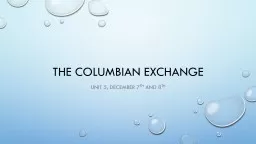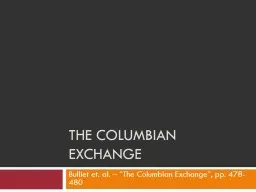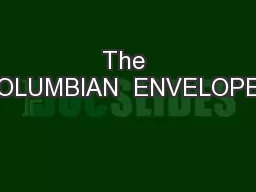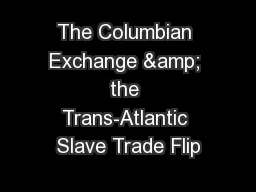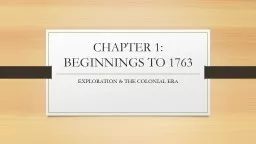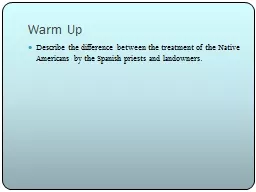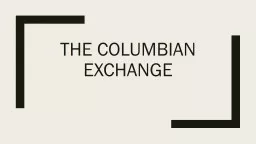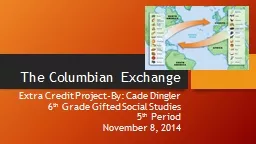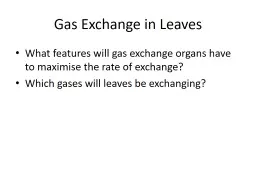PPT-The Columbian Exchange Unit 5, December 7
Author : lois-ondreau | Published Date : 2018-11-02
th and 8 th Before 1492 Two very different ecosystems Two difference disease pools Two sets of culturally diverse people Two sets of flora and fauna all the trees
Presentation Embed Code
Download Presentation
Download Presentation The PPT/PDF document "The Columbian Exchange Unit 5, December ..." is the property of its rightful owner. Permission is granted to download and print the materials on this website for personal, non-commercial use only, and to display it on your personal computer provided you do not modify the materials and that you retain all copyright notices contained in the materials. By downloading content from our website, you accept the terms of this agreement.
The Columbian Exchange Unit 5, December 7: Transcript
Download Rules Of Document
"The Columbian Exchange Unit 5, December 7"The content belongs to its owner. You may download and print it for personal use, without modification, and keep all copyright notices. By downloading, you agree to these terms.
Related Documents

